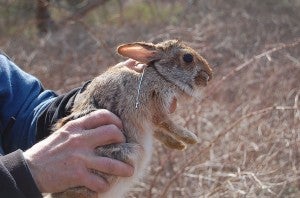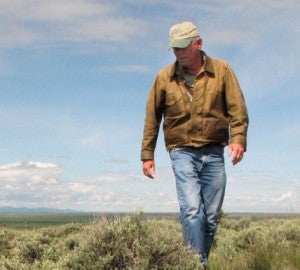Recovery of New England rabbit demonstrates importance of private lands in conservation

Saturday marked a new chapter in a years-long rabbit’s tale.
Of course I’m talking about the New England cottontail, which, until this week, was a candidate for listing under the Endangered Species Act.
Thanks to the work of private landowners, conservation groups, tribes, and state and government agencies, the U.S. Fish and Wildlife Service has decided to remove this critter from the candidate list and declare that it’s well on the path to recovery.
A team effort
The growth of the New England cottontail population was a team effort, with important contributions from state wildlife departments, the U.S. Fish and Wildlife Service, U.S. Department of Agriculture (USDA) Natural Resources Conservation Service (NRCS) and conservation organizations.
But the most important contribution came from farmers and forestland owners who committed to managing the specialized habitat of the New England cottontail.
“The decision not to list the New England cottontail shows that wildlife and working lands cannot just coexist, but thrive, in harmony. USDA is proud of the private landowners who stepped forward to make proactive conservation improvements on their land, restoring critical habitat for this unique rabbit.” — USDA NRCS Chief Jason Weller
These rabbits rely on young forests, with short trees surrounded by a variety of shrubs and bushes that provide critical protection from predators. As forests have matured over time, this habitat has experienced slow but significant erosion.
Thanks to the efforts of local landowners to cut trees and plant shrubs, 18,000 acres of new habitat was created for the rabbit.
Replicating the success story

The commitment by local landowners to recover the New England cottontail has set a strong precedent for habitat management of other species across the country.
Out West, similar efforts are underway by ranchers hoping to restore enough habitat for the greater sage-grouse to put the bird on a positive trajectory and preclude the need for listing under the Endangered Species Act.
The more we can do to stimulate the conservation ethic of private landowners before wildlife are put on the Endangered Species List – whether by public or private investments, or other incentive programs – the more successful we will be in protecting species. Because, at the end of the day, the needs of our nation’s wildlife aren’t that different from the needs of agricultural producers. They both need healthy, productive land to thrive.












